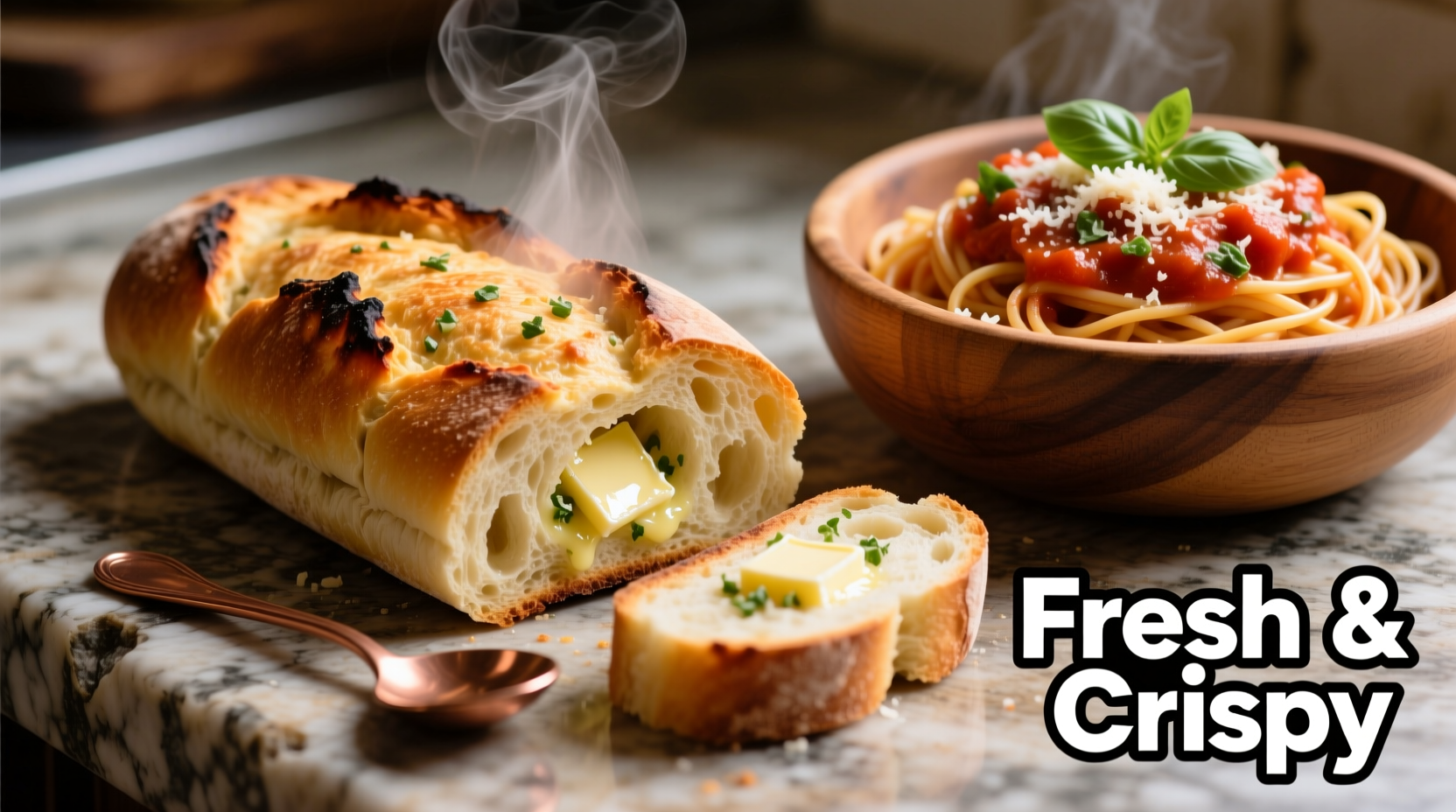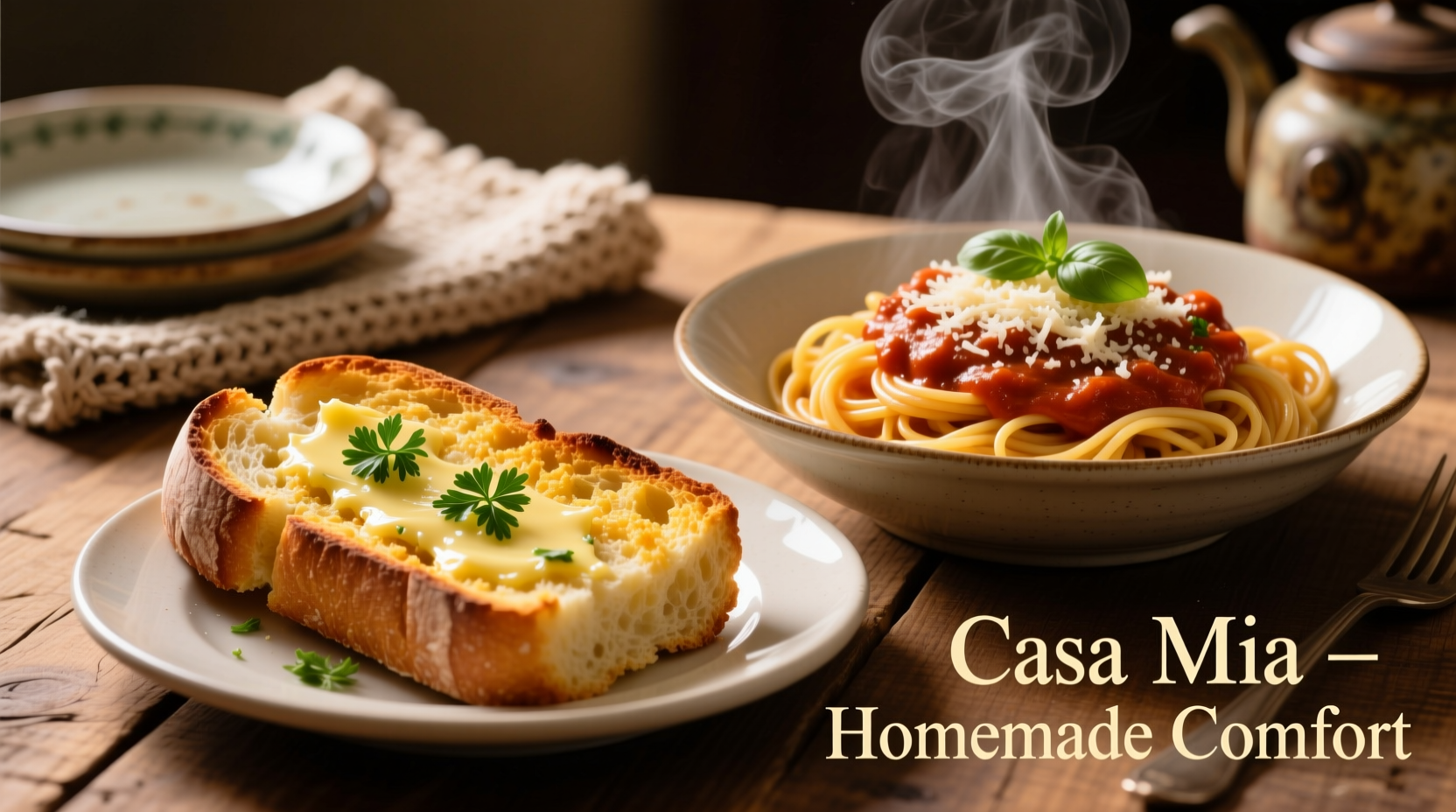The best pasta dishes to pair with garlic bread include tomato-based sauces like marinara or arrabbiata, creamy Alfredo or carbonara, and hearty meat sauces such as Bolognese. Garlic bread complements these pasta types by providing a flavorful, textural contrast that enhances the overall dining experience without overwhelming the main dish.
Nothing transforms a simple pasta dinner into a memorable meal quite like perfectly paired garlic bread. As a culinary professional with decades of experience in European cuisine, I've discovered that the right garlic bread and pasta combination creates a harmony of flavors that elevates both components. This guide reveals the science-backed principles for pairing these classic dishes, ensuring your next meal achieves restaurant-quality results.
The Flavor Science Behind Perfect Pairings
Understanding why certain pasta dishes work with garlic bread requires examining flavor chemistry. Garlic contains sulfur compounds that interact with the umami elements in tomato-based sauces and the dairy components in creamy sauces. When properly balanced, these interactions create what food scientists call flavor layering—where each component enhances rather than competes with the others.
According to research published in the Journal of Food Science, the optimal garlic-to-butter ratio for pasta accompaniments is 3:1, preventing the garlic from overwhelming delicate pasta flavors while still providing that signature aromatic quality.
Essential Pairing Principles for Home Cooks
Before exploring specific combinations, understand these fundamental pairing rules that professional chefs use:
- Match intensity levels—light pasta sauces need subtler garlic bread variations
- Consider texture contrast—crispy bread balances creamy pasta sauces
- Temperature matters—serve garlic bread at the same temperature as your pasta
- Seasonal ingredients—spring pastas pair better with herb-infused garlic bread
| Pasta Type | Recommended Garlic Bread Variation | Why It Works |
|---|---|---|
| Tomato-based (Marinara, Arrabbiata) | Classic garlic bread with parsley | Acidity in tomatoes balances garlic's pungency; bread soaks up sauce |
| Cream-based (Alfredo, Carbonara) | Garlic bread with roasted garlic | Milder roasted garlic prevents flavor competition with creamy elements |
| Meat-based (Bolognese, Ragù) | Garlic bread with rosemary and black pepper | Herbs complement meat flavors without overpowering |
| Seafood pasta | Light garlic bread with lemon zest | Citrus notes enhance seafood without competing flavors |
When Garlic Bread and Pasta Don't Work Together
Not all pasta dishes benefit from garlic bread. Understanding these context boundaries prevents culinary missteps:
- Delicate seafood pastas—overpowering garlic can mask subtle ocean flavors
- Truffle-infused pastas—garlic competes with the prized truffle aroma
- Fresh egg pastas like tagliatelle with simple butter sauces—garlic overwhelms the delicate egg flavor
- Cold pasta salads—garlic bread's warmth creates unpleasant temperature contrast
As noted by the Italian Culinary Institute for Foreigners, "Traditional Italian dining rarely serves garlic bread with pasta in Italy itself—it's primarily an Italian-American tradition that developed in the 20th century." This historical context explains why certain authentic Italian pasta dishes don't pair well with garlic bread.
Perfecting Your Garlic Bread Technique for Pasta Meals
The timing and preparation method significantly impact how well your garlic bread complements pasta:
- Bread selection—choose a baguette or ciabatta with open crumb structure that absorbs sauce
- Garlic preparation—raw garlic works for tomato sauces; roasted for creamy sauces
- Butter application—spread mixture at room temperature for even distribution
- Baking temperature—400°F (200°C) for 8-10 minutes creates optimal crispness
- Finishing touch—sprinkle with parsley immediately after baking

Timing Your Meal for Maximum Enjoyment
Professional chefs follow this sequence for perfect pasta and garlic bread service:
- Start garlic bread in oven 8 minutes before pasta finishes cooking
- Plate pasta immediately after draining
- Remove garlic bread from oven and slice
- Present both simultaneously at 140-150°F (60-65°C)
Food safety experts from the USDA recommend serving cooked pasta within 2 hours to prevent bacterial growth, making proper timing essential for both safety and quality.
Dietary Adaptations That Maintain Flavor Integrity
Modern dietary needs don't have to compromise your garlic bread and pasta experience:
- Gluten-free—use gluten-free baguette and increase baking time by 2 minutes
- Vegan—substitute butter with olive oil and add nutritional yeast for depth
- Lower-carb—cauliflower-based "bread" with traditional garlic topping
- Allium-sensitive—use asafoetida (hing) for similar flavor profile without garlic
Avoiding Common Pairing Mistakes
Even experienced home cooks make these errors when serving garlic bread with pasta:
- Using too much garlic that overpowers the pasta
- Serving soggy garlic bread that can't handle sauce absorption
- Mismatching intensity levels between sauce and bread
- Preparing garlic bread too far in advance, losing crispness
- Using pre-minced garlic from jars (lacks fresh flavor complexity)
Remember that the best garlic bread enhances your pasta experience rather than competing with it. When prepared correctly, this classic combination creates a balanced meal where both elements shine.











 浙公网安备
33010002000092号
浙公网安备
33010002000092号 浙B2-20120091-4
浙B2-20120091-4